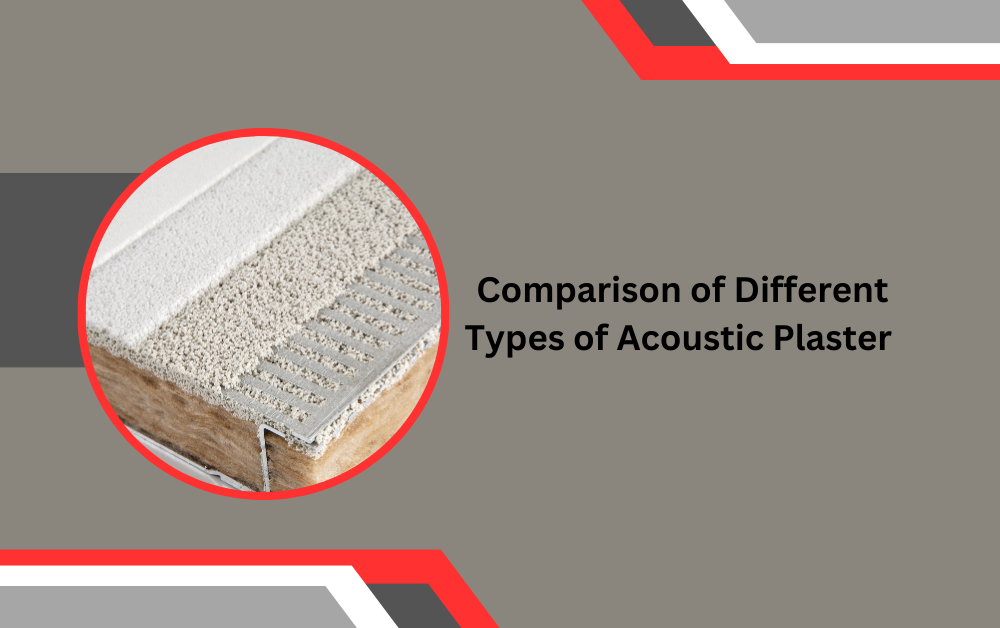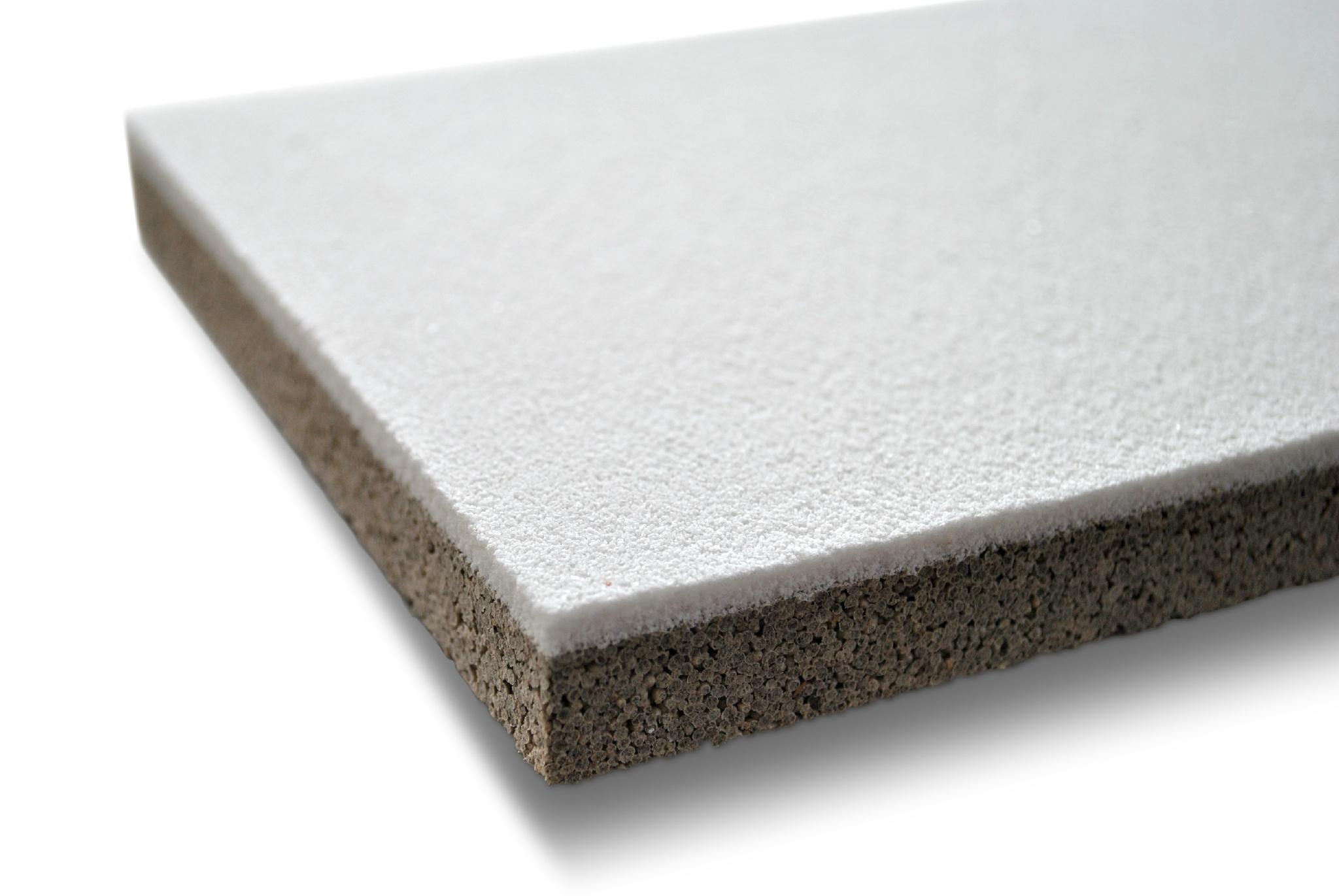Comparison of Different Types of Acoustic Plaster
Introduction: The Importance of Acoustic Plaster
Sound control is a critical aspect of modern architecture and interior design. Unwanted noise can disrupt concentration, reduce productivity, and affect overall well-being. Acoustic plaster offers a practical solution by absorbing sound and reducing reverberation, creating a more pleasant acoustic environment. Whether you are designing a concert hall, a conference room, or a home theater, the choice of acoustic plaster plays a vital role in achieving the desired sound quality. This comprehensive guide will explore the different types of acoustic plaster, their characteristics, and their best uses.
Types of Acoustic Plaster
Acoustic plaster comes in various formulations and finishes, each designed to address specific acoustic challenges. The main types include traditional acoustic plaster, synthetic acoustic plaster, and eco-friendly acoustic plaster. Each type has unique properties that influence its performance, installation process, and aesthetic appeal.
Acoustic plaster is an essential component for creating sound-controlled environments, be it in commercial buildings, residential homes, or public spaces. The right type of acoustic plaster can significantly enhance the acoustic quality of a room by reducing noise levels and improving sound clarity. But with so many options available, how do you choose the best one for your needs? This article will compare different types of acoustic plaster, evaluating their features, benefits, and applications to help you make an informed decision.
Traditional Acoustic Plaster
Traditional acoustic plaster, often made from lime or gypsum, has been used for centuries to improve the acoustics of buildings. This type of plaster is known for its natural look and ability to blend seamlessly with historical and classical architectural styles. Traditional acoustic plaster is breathable, allowing moisture to escape, which helps prevent mold and mildew growth. This makes it an excellent choice for older buildings that require both aesthetic preservation and sound control.
Performance and Applications
Traditional acoustic plaster is effective at absorbing mid to high-frequency sounds, making it suitable for spaces like libraries, museums, and residential homes. Its natural composition also makes it environmentally friendly, as it does not emit harmful VOCs (volatile organic compounds). However, the installation process can be labor-intensive, requiring skilled craftsmanship to achieve a smooth, even finish. The long curing time is another consideration, which can extend project timelines.
Synthetic Acoustic Plaster
Synthetic acoustic plaster, made from materials like polyester or fiberglass, offers a modern alternative to traditional options. This type of plaster is designed for high performance, with superior sound absorption capabilities across a wider range of frequencies. Synthetic acoustic plaster is often preferred for its durability and ease of maintenance, as it is resistant to cracks and discoloration.
Performance and Applications
Synthetic acoustic plaster is ideal for commercial spaces, such as offices, conference rooms, and educational facilities, where high levels of noise control are required. Its ability to be applied quickly and efficiently makes it a practical choice for large-scale projects. Additionally, synthetic acoustic plaster can be customized in various colors and textures, allowing for greater design flexibility. However, it may not provide the same natural aesthetic as traditional plaster, which can be a drawback for some projects.
Eco-Friendly Acoustic Plaster
Eco-friendly acoustic plaster is a relatively new entrant in the market, designed to meet the growing demand for sustainable building materials. Made from natural and recycled materials, this type of plaster is environmentally friendly and offers good acoustic performance. Eco-friendly acoustic plaster is free from harmful chemicals and is often produced using energy-efficient processes.
Performance and Applications
Eco-friendly acoustic plaster is suitable for a wide range of applications, including residential homes, schools, and commercial buildings. Its sustainability credentials make it particularly appealing for projects with a focus on green building practices. While it may not always match the high performance of synthetic plaster, it provides a balanced solution that meets both acoustic and environmental goals. The aesthetic options for eco-friendly acoustic plaster are also improving, with various finishes and textures available to suit different design preferences.
Comparing Performance and Benefits
When comparing different types of acoustic plaster, it’s important to consider their performance in key areas such as sound absorption, durability, ease of installation, and aesthetic appeal.
Sound Absorption
Sound absorption is the primary function of acoustic plaster. Traditional acoustic plaster performs well at absorbing mid to high-frequency sounds, but may not be as effective for low frequencies. Synthetic acoustic plaster, on the other hand, offers superior sound absorption across a wider frequency range, making it more versatile for different acoustic needs. Eco-friendly acoustic plaster provides good overall performance, with advancements in materials improving its effectiveness.
Durability and Maintenance
Durability is a crucial factor, especially for commercial and high-traffic areas. Synthetic material acoustic plaster is highly durable, resistant to cracks, and easy to clean, making it a low-maintenance option. Traditional acoustic plaster, while durable, can be prone to cracking and requires more maintenance to keep it looking its best. Eco-friendly acoustic plaster offers good durability, though its longevity can vary depending on the specific materials used.
Ease of Installation
The installation process can significantly impact the overall project timeline and cost. Traditional acoustic plaster requires skilled labor and a longer curing time, which can be a drawback for tight schedules. Synthetic acoustic plaster is easier and quicker to install, often applied in a single layer, which speeds up the process. Eco-friendly acoustic plaster varies in its installation requirements, with some products offering similar ease of installation to synthetic options.
Aesthetic Appeal
Aesthetic appeal is another important consideration, particularly for spaces where design is a priority. Traditional acoustic plaster offers a classic, natural look that is hard to replicate with synthetic fabrics materials. It blends seamlessly with historical and traditional architectural styles, providing an authentic finish. Synthetic acoustic plaster, while available in various colors and textures, may not provide the same natural aesthetic. However, it offers greater flexibility in design customization. Eco-friendly acoustic plaster is improving in terms of aesthetic options, with various finishes available to suit modern design trends.
Conclusion: Choosing the Best Acoustic Plaster
Choosing the best acoustic plaster depends on your specific needs and priorities. Traditional acoustic plaster is ideal for projects that require a natural, historical finish and effective sound absorption for mid to high frequencies. Synthetic acoustic plaster offers superior performance, durability, and ease of installation, making it suitable for high-traffic commercial spaces. Eco-friendly acoustic plaster provides a balanced solution that meets both acoustic and environmental goals, making it an excellent choice for sustainable building projects.
By understanding the unique characteristics and benefits of each type of acoustic plaster, you can make an informed decision that meets your project’s requirements. Whether you prioritize performance, sustainability, or aesthetic appeal, there is an acoustic plaster that will suit your needs and help you create the perfect acoustic environment. In this comprehensive comparison, we have explored the different types of acoustic plaster, their performance, and their best applications. By carefully considering factors such as sound absorption, durability, ease of installation, and aesthetic appeal, you can choose the acoustic plaster that best fits your project’s needs. Each type of acoustic plaster offers unique benefits, and understanding these differences will help you make the right choice for your space.
Note: – To Read More Articles Visit on-




